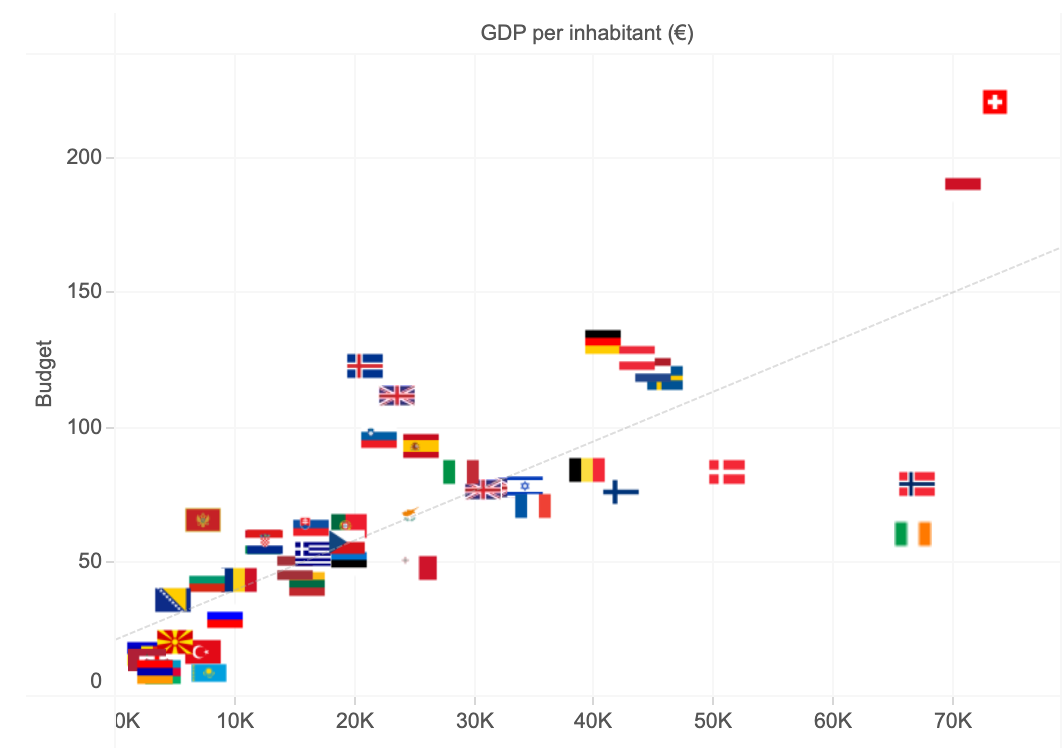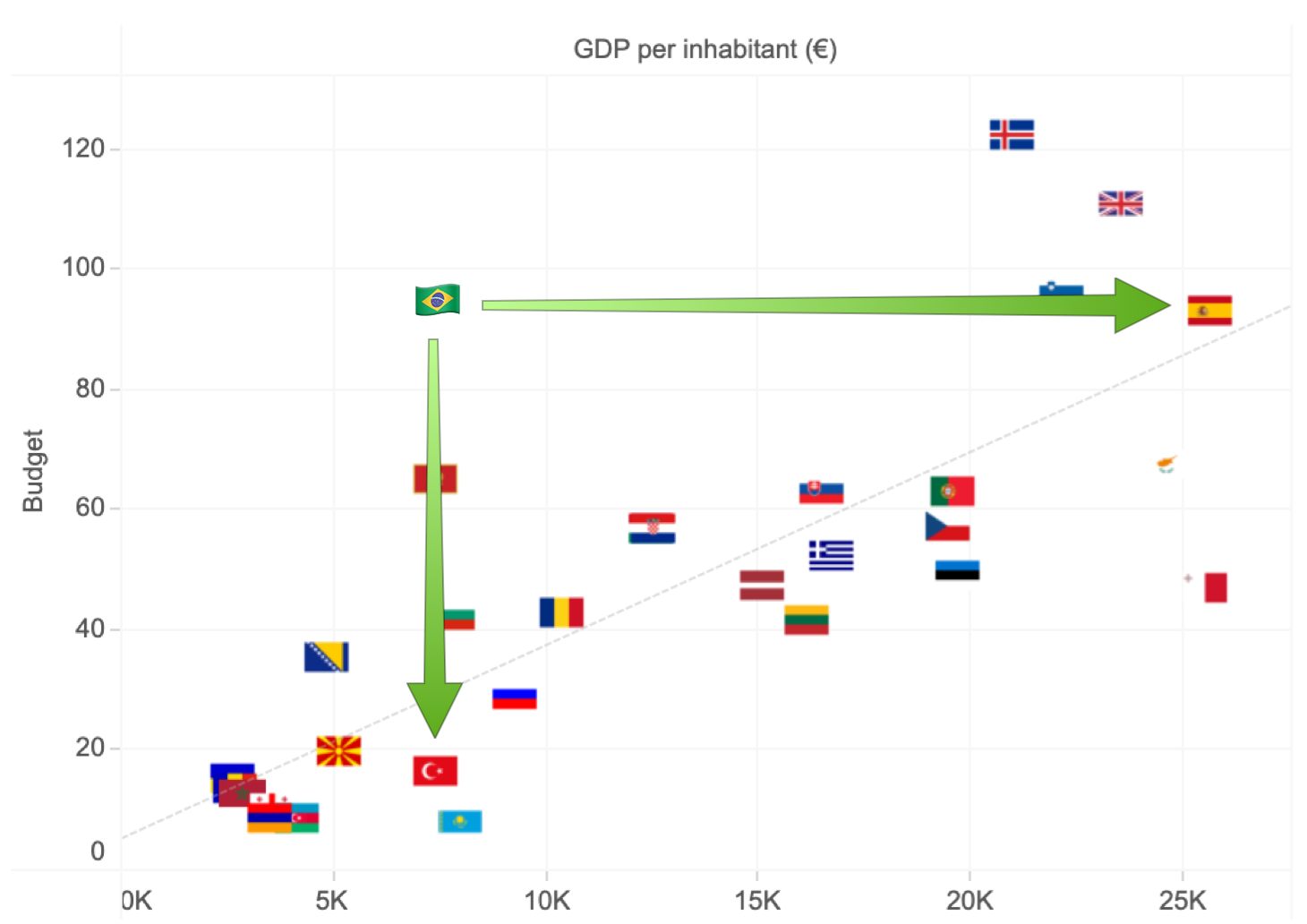Judicial budget in Europe and Brazil
The latest CEPEJ study on judicial budget in Europe It is relative to the year 2018. The darker the country, the richer it is in proportional terms (GDP per capita). The larger the circle, also proportionally, the more expensive the Judiciary is (judicial budget per capita).

The country that spends the most annually is Switzerland (€ 220 /inhabitant/year), and it is also the country with the highest GDP per capita (€ 73,697 /inhabitant/year). Also clashing, Monaco comes next.
There is a second platoon, formed by Germany, Austria, the Netherlands and Sweden , all with intermediate income (greater than € 40 thousand/inhabitant/year). It seems that, although it is an intermediate income, it is a sufficiently high level to form the floor of a group of comparable countries. These countries spend a lot of money on the judiciary.
In contrast, even within countries with intermediate and high income (greater than € 40 thousand/inhabitant/year), there is the group of countries that invest less than the average in the Judiciary: Denmark, Norway, Finland and Ireland . These countries do not spend much money on the judiciary.

Also analyzing the countries with a slightly lower GDP (from € 26 thousand to € 40 thousand/inhabitant/year), it is possible to find a block that spends on average (from € 70 to € 80 /inhabitant/year). They are: Belgium, United Kingdom, France and Italy . They are a kind of average of the European average.
In the same period, the Brazilian GDP per capita was (€ 7,789 /inhabitant/year), considering a population of 209.5 million Brazilians (Source: World Bank ). The judicial budget, in turn, was 102.1 billion for 2018, which resulted in per capita spending of R$ 489.58 (Source: C NJ). This places Brazil with a per capita expenditure of around € 91.77.
With all the problems that this approach can have, there is something that proves its value. This is a proportional comparison, which is why we can conclude that the Brazilian Judiciary is expensive, compared to the lowest-income group in the sample .
Brazil's income level allows for a more adequate comparison with Eastern Europe. Even so, Brazil would occupy a blank place in the European diagram, since none of the lower-income countries spends around € 90 /inhabitant/year. This spending is comparable to that of Spain, whose proportional GDP is more than three times higher. Income, in turn, would put Brazil in line with Turkey, which is its approximate position in the graph:

In a future post I will compare the same data, not from the perspective of the inhabitant, but from the percentage of the judicial budget over the GDP. It is also another way of investigating whether our Judiciary is expensive or cheap.